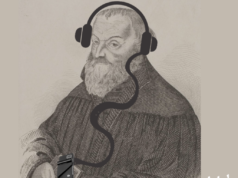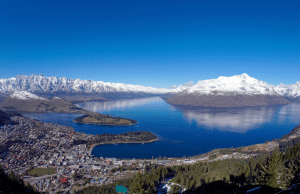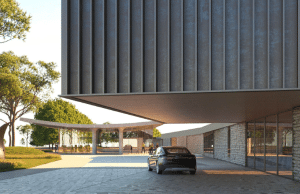When I sat down to write this I suddenly thought, what does South East Europe mean? Who does it include? I actually (believe it or not) asked a few people which countries came to mind when speaking about South East Europe and the answers were very different. At times even causing heated discussions. Did it include Greece and Cyprus? Did it include Hungary or even Turkey? It makes a big difference in our industry. Some destinations in this group are mature tourism destinations but only fledglings in the Meeting Industry and others are just emerging in both. When we consider South East Europe we immediately associate some key words with the region, novelty, recent historical events, gastronomy, beautiful people and beautiful landscapes. With the exception of novelty, none of the other words feature highly on the list of requisites for a meetings destination. I have, I must say, been guilty in the past of too quickly dismissing this region as too similar to differentiate between them and just looking at it as a whole, or even to sit on the sidelines and wait for a little more experience locally before deciding to take my events there. Recently (over the last 5 years) I have been fortunate enough to have the opportunity to visit a few cities in the region personally and have asked my staff to carry our follow-up research whenever my first impressions resulted in the destination being eligible for our in-house MI destination requirements list. The conclusions have been that while some cities make wonderful incentive destinations, providing a large variety of options as regards activities, wow factor and quality services, they would not pass the test for anything other than small meetings. Others boast the infrastructure which is perfectly apt to host meetings right now but have not yet acquired enough reputation as regards professional expertise and others have all the right qualities but not the right positioning. Others have the hotel rooms but not the meeting venues; others have the venues and not enough rooms across all the categories – a must for association meetings. However most do not really know their own profile and what they are suited for and so have not been branding themselves correctly – in our industry this is of the utmost importance. Meetings, most destinations forget, are not about tourism. They make use of the tourism infrastructure but they are about the business of knowledge or business objectives. That is the language that must be spoken and here I believe is where the communication fails when promoting the region.
As a mere example Croatia has made great strides in all these areas. I am continually impressed but how much their figures are growing. They have been able to reposition themselves for the MI sector and have become extremely pro-active. I have seen the destination grow in leaps and bounds, aggressively marketing to my colleagues and just as regards travel figures from my own destination, Croatia saw an increase of 39% in the number of travellers from Portugal just for 2010. Local suppliers have dedicated time to creating professional associations (namely the brand new meeting planners association), investment in certification for its professionals among other initiatives. Another excellent example is the very proactive Convention Bureau of Slovenia. The professionalism in their targeting of international clients, their dedication to the sector both at a political and supplier level is impressive. The fact that they host Conventa which has metamorphosed into one of the most well-organised regional trade shows, has proven a wake-up call even to seasoned meeting industry professionals like myself. But then Slovenia, like the region in general, has a lot of advantages. Very young, very well-educated travel and hospitality industry professionals, who understand the true meaning of “hospitality” and who are hungry for the business. They believe that if they raise their sights and see the possibilities they can achieve anything. This can-do attitude is one of the best features of the destination. The quality-cost ratio and the novelty factor are also added benefits.
If, like me in the past, our industry “boxes” all the countries of the region together and just sees them from one perspective, they will all seem very similar. This is not only a mistake but deprives the industry of expanding to new experiences and new ventures. If we exclude Turkey and Greece from this analysis (only because they a considered mature destinations), then none of the remaining group of countries appears in the top 40 worldwide meeting destinations and many of them not even in the top 100. For the region this is, from my perspective, actually great news. It means there is tremendous room for growth. They have a clean slate as a starting point and as such an open horizon in front of them. But here is where the truth becomes painful. They must implement well-thought out marketing and branding strategies, differentiated from their tourism strategies. There is a profound need to speak “client”. To create entities who understand the business of meetings, who speak the language and can deliver the project. It is necessary to take advantage of the compactness and endless possibilities of offerings that allow clients to benefit from more than two destinations because of closeness. The discourse must be one of benefits rather than logistics. Differentiation but complementarity is added value for the region. Local suppliers and meeting industry professionals must present a united destination positioning and the story that is then told must be one voice.
In conclusion the message I would leave for the region is one where the future seems bright. Of course to become a star in the meeting industry the region must up its marketing game and make it more accessible internationally. It would definitely benefit from greatly increased accessibility, more educational visits, from Ambassador Programmes but they already have a lot of other advantages. Young dedicated professionals, already actively “networking” themselves onto the buyer’s horizon and the politicians are listening and watching. They must be able to differentiate themselves positively from local competitors while still benefitting from synergies born out of such proximity.
A meeting industry business plan must be implemented but countries such as Slovenia and Croatia have, so far, taken the right road. They clearly understand that part of the experience is the variety of landscapes, restaurants and places to visit all compacted into short distances, the friendliness of the locals, the surprising taste of their wines and the exquisite quality of the food, now they must learn to sell the business value, and especially in today’s economy.
So what are we waiting for? Let’s talk business!
Linda Pereira, Executive Director of CPL EVENTS













